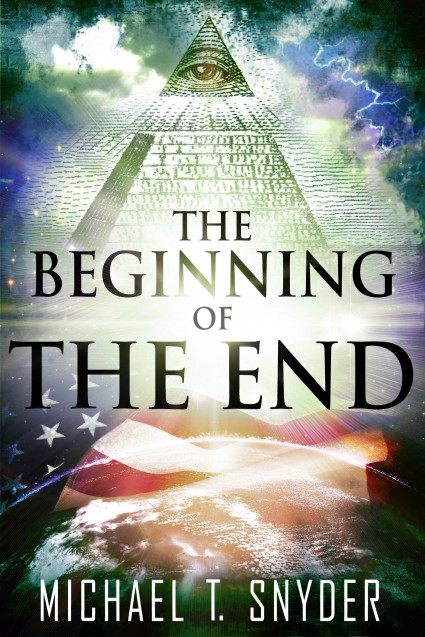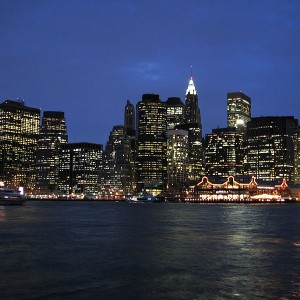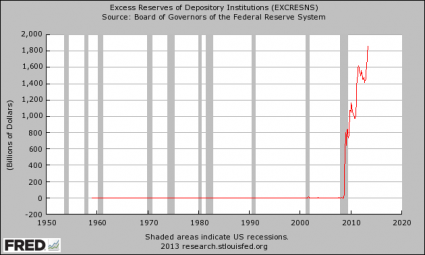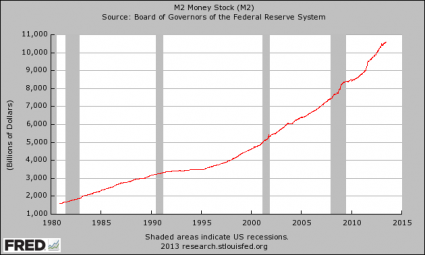 The legal claims on physical gold far exceed the amount of physical gold that the banks actually have by a very, very wide margin. And right now the bankers are scared out of their wits because their warehouses are being drained of physical gold at a frightening rate. So what happens when their physical gold is gone but they still have lots and lots of people with legal claims to gold? When that moment arrives, it will represent the end of the paper gold scam. Many believe that the recent takedown of the price of paper gold was a desperate attempt by the bankers to put off that day of reckoning, but it appears to have greatly backfired on them. Instead of cooling off demand for precious metals, it has unleashed a massive “gold rush” all over the globe. Meanwhile, word has been spreading among wealthy families in both North America and Europe that they had better grab their physical gold out of the banks while they still can. This is creating havoc in the financial community, and at least one major international bank has already declared that it will only be settling those accounts in cash from now on. The paper gold scam is starting to unravel, and by the time this is all over it is going to be a complete and total nightmare for global financial markets.
The legal claims on physical gold far exceed the amount of physical gold that the banks actually have by a very, very wide margin. And right now the bankers are scared out of their wits because their warehouses are being drained of physical gold at a frightening rate. So what happens when their physical gold is gone but they still have lots and lots of people with legal claims to gold? When that moment arrives, it will represent the end of the paper gold scam. Many believe that the recent takedown of the price of paper gold was a desperate attempt by the bankers to put off that day of reckoning, but it appears to have greatly backfired on them. Instead of cooling off demand for precious metals, it has unleashed a massive “gold rush” all over the globe. Meanwhile, word has been spreading among wealthy families in both North America and Europe that they had better grab their physical gold out of the banks while they still can. This is creating havoc in the financial community, and at least one major international bank has already declared that it will only be settling those accounts in cash from now on. The paper gold scam is starting to unravel, and by the time this is all over it is going to be a complete and total nightmare for global financial markets.
For years it has been widely known that the promises that banks have made regarding their gold far exceed their actual ability to deliver, but we have never reached a moment of such crisis before.
Posted below are quotes from people that know precious metals far better than I do. What these experts are saying is more than a little bit disturbing…
–CME President Terry Duffy: What’s interesting about gold, when we had that big break two weeks ago we saw all the gold stocks trade down significantly, we saw all the gold products trade down significantly, but one thing that did not trade down, was gold coins, tangible real gold. That’s going to show you, people don’t want certificates, they don’t want anything else. They want the real product.
–Billionaire Eric Sprott: So we see all of these paper (trading) volumes going through that bear absolutely no relationship to what’s going on in the physical markets. As you know I have always been a proponent of the fact that supply in the gold market was way less than demand, and by a very large factor. I think demand exceeds supply by at least 60%. The central banks are surreptitiously supplying that gold, and ultimately they will be running on fumes.
When we hear about the LBMA not willing to deliver gold, and JP Morgan’s inventories at the COMEX have gone from 2.4 million (ounces) down to 160,000 ounces, it just makes you realize that all of this paper trading means nothing. It’s the real physical market that you have to rely on.
–JS Kim: FACT #1: COMEX gold vaults were recently drained of 2 million ounces of physical gold in one quarter, the largest withdrawal of physical gold bullion from COMEX vaults in one quarter during this entire 12-year gold and silver bull. There has been speculation about the reasons that spurred these massive withdrawals of gold from COMEX vaults, but the most reasonable speculation is that no one trusts the bankers to hold on to their physical gold anymore, especially in light of Fact #2. Note below, that both registered AND eligible stocks of gold had heavily declined in recent months. Such an event signals a general distrust of the banking system from everyone holding gold in registered COMEX vaults.
FACT #2: One of the largest European banks, ABN Amro, defaulted on their gold contracts and informed their clients that they would only settle their gold bullion contracts in cash and not in physical. So much for the supposed legality of financial contracts as a “binding” contract. So whether Fact #1 caused Fact #2 or vice versa is irrelevant. What IS apparent is that the level of trust in bankers to safekeep physical gold and physical silver is disappearing, as it should be, and as it should have already been for years now. But truth always takes some time to catch up to banker spread lies and that is what is happening now. I have been warning people never to trust bankers in deals involving gold and silver for years now, as in this article I wrote nearly four years ago informing the public that the SLV and GLD are likely a banker invented scam as well.
FACT #3: Silver fraud whistleblower and London trader Andrew Maguire stated that the LBMA was having trouble settling gold contracts in bullion as well and stated that institutions that asked for physical settlement “were told they would be cash settled instead by a bullion bank.” In plain English, this is a default. So Andrew Maguire reported that the LBMA had already gone into default. In light of Fact #1 and Fact #2, the dominoes were starting to tumble and the house of cards that the bankers had built in gold and silver paper derivatives to deceive and hide the true fundamentals of the physical gold and physical markets from the entire world was rapidly starting to crumble. A financial earthquake of magnitude 2.5 was quickly threatening to evolve into one of the biggest financial earthquakes of all time in which the world’s confidence in all global fiat currencies would effectively have a well-deserved funeral.
–Jim Sinclair: I think the reality is the supply situation is extremely volatile at this point, and even discussing it is like rubbing a raw nerve to the people who are in charge. The amount of discussion on the subject of warehouse supply, supply that is represented by the gold leases, indicated to the central planners that the demand for physical was going to continue to effect the exchanges.
Although they did not expect any grandstand delivery, the mere continued draining of physical inventories was threatening the very functioning of the paper exchange. That threatening of the paper exchange and its ability to continue functioning is really taking off the blinders and revealing the truth behind the critical question, ‘Where is the gold?’
The question now is, ‘Where has the gold gone?’ Who has all of this gold? Because of the nature of gold leasing, all of this gold has been purchased and it has gone somewhere. The reality of the empty vaults reveal that the gold has gone missing.
–Ronald Stoeferle: We’re seeing this rush to physical gold not only in the retail market, but also for the institutional players…[it’s] just overwhelming…I [estimate] a 130-to-1 [ratio of paper to physical gold]…and I think in the last week we were really close to [triggering] a default of the paper market.
–Gerhard Schubert, head of Precious Metals at Emirates NBD: I have not seen in my 35 years in precious metals such a determined and strong global physical demand for gold. The UAE physical markets have been cleared out by buyers from all walks of life. The premiums, which have been asked for and which have been paid have been the cornerstone of the gold price recovery. It is very rare that physical markets can have a serious impact on market prices, which are normally driven solely by derivatives and futures contracts…
I did speak during the week with several refineries in the world, of course including the UAE refineries, and the waiting period for 995 kilo bars is easily 2-3 weeks and goes into June in some cases. A large portion of the 995 kilo bars in the UAE goes normally into the Indian market, but a lot of the available 995 kilo bars are destined for Turkey, at this time. We heard that premiums paid in Turkey have reached anything between US $ 20 and US $ 35 per ounce.
–James Turk: Another indication of the demand for large bars is the huge drawdown in the gold stock in COMEX warehouses. It is noteworthy that COMEX reports show the drawdown is largely the result of dealers removing their inventory, their working stock. When that happens, you know the availability of supply is constrained.
What all of this means, Eric, is one thing. If the central planners want to keep the precious metals at these low prices, to meet the demand for physical metal they will need to empty more metal from central bank vaults, or borrow metal from the ETFs as some have suggested is happening. Otherwise, the central planners will have to step back and stop their intervention, thereby letting the price of gold and silver rise so that demand tapers off, bringing demand and supply of physical metal back toward some kind of balance.
We’ve seen this same situation several times over the last twelve years. It is what I have been calling a “managed retreat.” Despite the current weakness, I firmly believe we have again entered a critical period where the central planners will need to retreat once again in order to let the gold and silver prices climb higher.
–The Golden Truth: And then I get a call from a close friend in NYC last Friday. His career has been in private wealth management in the private bank department of the Too Big To Fail banks. He’s been looking for work and chats with old colleagues all the time. He called my Friday and told me he just got off the phone with a very high level private banker from a big Euro-based TBTF bullion bank, but who was at JP Morgan until about six months ago.
This guy told my friend that there is a scramble by many very wealthy European families/entities to get their 400 oz bars out of the big bank vaults. He knows this personally, for a fact. He said the private banker community is small over there and the big wealthy families all talk to each other and act on the same rumors/sentiment. The Bundesbank/Fed and the ABN/Amro situations triggered this move. He knows for a fact JPM tried to calm fears about 3 months ago by sending a letter to it’s very wealthy clients assuring them their bars were safe, in allocated accounts. He said right now those same families are walking into the big banks like JPM and demanding delivery of their bars or threatening to take their $100’s of millions in investment portfolios to competitors. His wording was “these people are putting a gun to the heads of private banks and demanding their gold.”
I know this information is good because I know my friend’s background and when he tells me his source is plugged in, the guy is plugged in. Not only that, my friend’s source said that there’s no doubt that someone like a John Paulson, not necessarily specifically him, but entities like him or it may include him, have held a gun to GLD and demanded delivery of physical in exchange for their shares.
Regarding the Bundesbank/Fed situation, recall that the Bundesbank asked to have some portion of its gold sitting – supposedly – in the NY Fed vault in NYC sent back Germany. The total amount is 1800 tonnes. After behind the scenes negotiations, the Fed agreed to ship 300 tonnes back over seven years. To this day, the time required for that shipment has never been explained. Venezuela demanded the return of its 200 tonnes held in London, NYC and Switzerland and received it all within about four months.
And regarding the ABN/Amro situation. ABN/Amro offered a gold investment account product that offered physical delivery of the gold in the investment account when the investor cashes out. About a week before the gold price smash, ABN sent a letter to its clients informing that the physical delivery of the bullion was no longer available and that all accounts would be settled with cash at redemption.
I believe it was these two events that triggered the big scramble for physical gold by wealthy families/entities who were suspicious of the integrity of their bank vault custodial arrangement anyway.
*****
So what does all of this mean?
It means that we are entering a period when there will be unprecedented volatility for precious metals. There will be tremendous ups and downs as this crisis plays out and the bankers try to keep the paper gold scam from completely unraveling.
Meanwhile, nations such as China continue to stockpile gold as if the end of the world was coming.
According to Zero Hedge, Chinese gold imports set a brand new all-time record high in March…
Quite the contrary: as export data released by the Hong Kong Census and Statistics Department overnight showed, Chinese gold imports in March exploded to an all time record high of 223.5 tons.
And the number for April is expected to be even higher.
Does China know something that the rest of us do not?
We are also seeing a rapid decoupling between spot prices and physical prices. In fact, it is quickly getting to the point where the spot price of gold and the spot price of silver are becoming irrelevant.
For example, demand for silver coins has become so intense that some dealers are charging premiums of up to 30 percent over spot price for silver eagles.
That would have been regarded as insane a few years ago, but people are now willing to pay these kinds of premiums. People are recognizing the importance of actually having physical gold and silver in their possession and they are willing to pay a significant premium in order to get it.
We are moving into uncharted territory. The paper gold scam is rapidly coming to an end. In the long-term, this will greatly benefit those that are holding significant amounts of physical gold and silver.

 The too big to fail banks are now much, much larger than they were the last time they caused so much trouble. The six largest banks in the United States have gotten 37 percent larger over the past five years. Meanwhile, 1,400 smaller banks have disappeared from the banking industry during that time. What this means is that the health of JPMorgan Chase, Bank of America, Citigroup, Wells Fargo, Goldman Sachs and Morgan Stanley is more critical to the U.S. economy than ever before. If they were “too big to fail” back in 2008, then now they must be “too colossal to collapse”. Without these banks, we do not have an economy. The six largest banks control 67 percent of all U.S. banking assets, and Bank of America accounted for about a third of all business loans by itself last year. Our entire economy is based on credit, and these giant banks are at the very core of our system of credit. If these banks were to collapse, a brutal economic depression would be guaranteed. Unfortunately, as you will see later in this article, these banks did not learn anything from 2008 and are being exceedingly reckless. They are counting on the rest of us bailing them out if something goes wrong, but that might not happen next time around.
The too big to fail banks are now much, much larger than they were the last time they caused so much trouble. The six largest banks in the United States have gotten 37 percent larger over the past five years. Meanwhile, 1,400 smaller banks have disappeared from the banking industry during that time. What this means is that the health of JPMorgan Chase, Bank of America, Citigroup, Wells Fargo, Goldman Sachs and Morgan Stanley is more critical to the U.S. economy than ever before. If they were “too big to fail” back in 2008, then now they must be “too colossal to collapse”. Without these banks, we do not have an economy. The six largest banks control 67 percent of all U.S. banking assets, and Bank of America accounted for about a third of all business loans by itself last year. Our entire economy is based on credit, and these giant banks are at the very core of our system of credit. If these banks were to collapse, a brutal economic depression would be guaranteed. Unfortunately, as you will see later in this article, these banks did not learn anything from 2008 and are being exceedingly reckless. They are counting on the rest of us bailing them out if something goes wrong, but that might not happen next time around.









